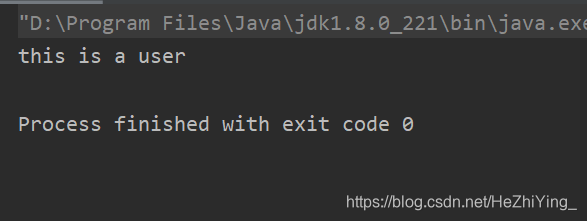要写Spring代码,那jar包肯定是少不了的,这里用Maven进行管理,下面是Maven的坐标
<dependencies>
<dependency>
<groupId>org.springframework</groupId>
<artifactId>spring-webmvc</artifactId>
<version>5.2.0.RELEASE</version>
</dependency>
</dependencies>当坐标写完之后,进行写我们的pojo类,这里是一个Hello类
package com.zhiying.pojo;
public class Hello{
private String str;
public String getStr() {
return str;
}
public void setStr(String str) {
this.str = str;
}
@Override
public String toString() {
return "Hello{" +
"str='" + str + '\'' +
'}';
}
}
然后在resource里写一个xml的配置文件,这里命名为Beans.xml
<?xml version="1.0" encoding="UTF-8"?>
<beans xmlns="http://www.springframework.org/schema/beans"
xmlns:xsi="http://www.w3.org/2001/XMLSchema-instance"
xsi:schemaLocation="http://www.springframework.org/schema/beans
https://www.springframework.org/schema/beans/spring-beans.xsd">
<!--使用Spring创建对象,在Spring中这些都称为Bean-->
<bean id="hello" class="com.zhiying.pojo.Hello">
<!--这里是用的value,如果是引用的话是ref-->
<property name="str" value="Hello Spring"/>
</bean>
</beans>然后是测试了
import com.zhiying.pojo.Hello;
import org.springframework.context.ApplicationContext;
import org.springframework.context.support.ClassPathXmlApplicationContext;
public class MyTest {
public static void main(String[] args) {
//获取Spring的上下文对象
ApplicationContext context = new ClassPathXmlApplicationContext("beans.xml");
//我们的对象都是在Spring中管理的,我们要使用直接到里面取即可
Hello hello = (Hello) context.getBean("hello");
System.out.println(hello.toString());
}
}
测试结果:

这样做我们就不用去改代码了,如果需要改需求,只需要改配置文件即可,所谓的IoC也就是对象由Spring创建、管理和装配
下面来练习一个ref的注入
首先是Dao层
package com.zhiying.dao;
public interface UserDao {
public void getUser();
}package com.zhiying.dao;
public class UserDaoImpl implements UserDao {
public void getUser() {
System.out.println("this is a user");
}
}然后是Service层
package com.zhiying.service;
import com.zhiying.dao.UserDao;
public interface UserService {
public void setUserDao(UserDao userDao);
public void getUser();
}package com.zhiying.service;
import com.zhiying.dao.UserDao;
public class UserServiceImpl implements UserService {
UserDao userDao;
public void setUserDao(UserDao userDao) {
this.userDao = userDao;
}
public void getUser() {
userDao.getUser();
}
}然后是Beans.xml配置文件
扫描二维码关注公众号,回复:
8523715 查看本文章


<?xml version="1.0" encoding="UTF-8"?>
<beans xmlns="http://www.springframework.org/schema/beans"
xmlns:xsi="http://www.w3.org/2001/XMLSchema-instance"
xsi:schemaLocation="http://www.springframework.org/schema/beans
https://www.springframework.org/schema/beans/spring-beans.xsd">
<bean id="userDaoImpl" class="com.zhiying.dao.UserDaoImpl"/>
<!--这里进行了注入,所以UserServiceImpl需要有set方法-->
<bean id="userServiceImpl" class="com.zhiying.service.UserServiceImpl">
<!--应用Spring中创建好的对象-->
<property name="userDao" ref="userDaoImpl"/>
</bean>
</beans>最后是测试
import com.zhiying.service.UserService;
import com.zhiying.service.UserServiceImpl;
import org.springframework.context.ApplicationContext;
import org.springframework.context.support.ClassPathXmlApplicationContext;
public class MyTest {
public static void main(String[] args) {
ApplicationContext context = new ClassPathXmlApplicationContext("beans.xml");
UserService userService = (UserServiceImpl) context.getBean("userServiceImpl");
userService.getUser();
}
}结果如下:

